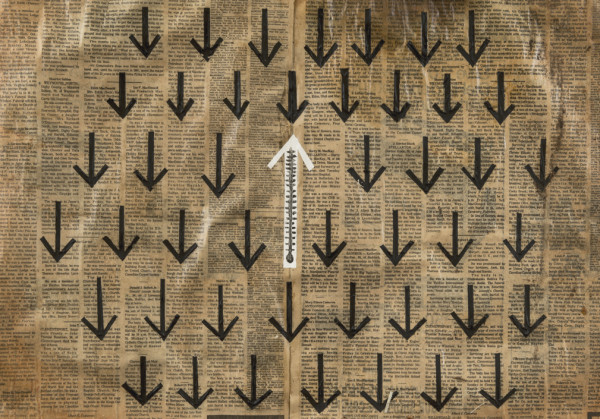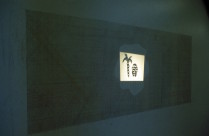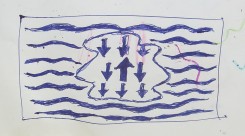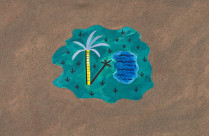In all, Robert explores six versions of the mirage theme for his “Oppositions” exhibition. Each version uses different media: one is a slide projection, another is a see-through sculpture; two feature paintings on sandpaper; the above image is painted on newspaper. The theme was of great importance to him at the time as he worked out his own thoughts on art’s capacity to generate illusion or to engage with reality. In his sketchbook notes, Robert defines mirage as “a barren wasteland with a veritable garden of Eden appearing in the centre.” This reference to a Biblical paradise leads Robert to think of a contest between good and evil, the white arrow pointing upward and black arrows pointing downward. Robert then lists a number of other possible associations: “The white arrow represents a human figure or a tree or the sun or the holy white glow from God himself in the centre of the universe. The black arrows suggest blades of grass, a hail of bullets, rain, wind or an electro-magnetic field.” The arrows are painted on top of newspaper on a double page spread of obituaries and lost and found notices. The newspaper has been shellacked to create a light-coloured island in the centre of the page. The white arrow has a thermometer painted inside it as if to record the great heat of this imaginary desert. The image takes on new meaning in today’s world with the advent of global warming and the debates that swirl around it, with many critics saying it is a real danger, while others maintain it is a false alarm.
Mirage (Arrows)



